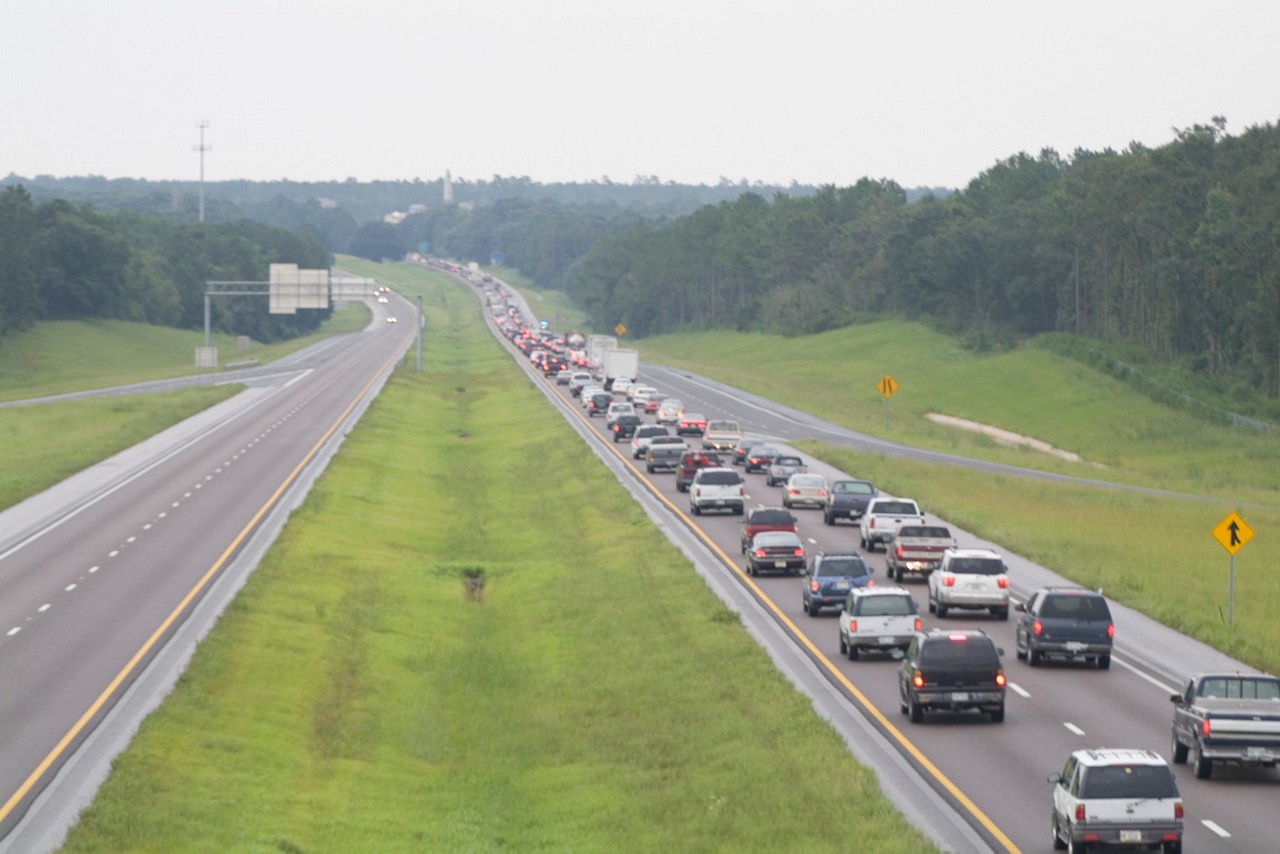To ensure you receive the best service possible,
please enter your zip code below:

Article overview:
Hurricanes bring torrential wind and rain capable of devastating cities. Though forecast models attempt to predict their path, storms can shift at the last minute—hitting unprepared areas instead.
This happened in 2017 when Hurricane Irma was projected to impact Central Florida but veered south at the last minute, devastating Fort Myers. Because of their unpredictability, a solid hurricane evacuation plan is essential to preparedness.
Get our Hurricane Preparation Guide for more information.
Access free guideWhen a storm is approaching, it’s vital to know when to shelter in place and when to evacuate. Local or state emergency officials issue evacuation notices in two categories: voluntary and mandatory.
To understand evacuation orders and how they apply to your area, review official FEMA evacuation guidelines through their website or app.

Don’t wait until the last minute. Early planning reduces storm stress. Confirm availability and length of stay in advance.
Hotels: Book your rooms as early as possible to reserve your spot. Don’t get on the road and hope that you’ll find a place to stay. Use AAA.com/Hotels the AAA Mobile app to find and book a hotel or motel. Look for accommodations that have flexible cancellation policies, so you’re not stuck with a reservation that you don’t use if the storm shifts.
Note: if you are evacuating with pets look for pet-friendly places that will accommodate your pets.
If purchased before a storm is named, travel insurance can help protect your vacation investment with benefits for trip interruption or cancellation for covered reasons, like a dwelling or destination becoming uninhabitable.
Get a quoteLast resort options for people who are financially unable to pay for a hotel or cannot secure a place with family or friends, is to keep a list of shelters that are managed by local and state governments or the Red Cross. If you can avoid using a shelter, consider doing so to leave room for someone who may have no other option.
Online lists of shelters:
Here are some helpful considerations when selecting your destination:

A good route saves time and reduces delays. To identify the best hurricane evacuation routes based on your location, be sure to use FEMA’s evacuation route resources or your local emergency management website.
Tip: Designated evacuation route highways receive priority services and support from local and state emergency personnel.

A ready kit is a key part of any hurricane evacuation checklist. It saves time and ensures you have supplies that become scarce before a storm. Store three days of supplies in a durable, travel-ready bag or bin.
Hurricane go-bag essentials
Having a go-bag packed and ready can make evacuation faster, safer and less stressful. Keep this kit in an easy-to-reach spot so you can grab it and go if needed. Here’s what to include:

If a hurricane is approaching and you're planning to evacuate, your vehicle becomes your lifeline. Gas stations may run dry, auto shops may close and roadside help could be delayed—so it’s crucial to get your car road-ready at least 48 hours before the storm hits.
Here’s how to make sure your vehicle is prepped and reliable before you go:
Taking time to prep your vehicle now means a smoother and safer evacuation when every minute counts.

When an evacuation order is issued or a storm is approaching, taking a few key steps before you leave can make a big difference in protecting your home and property. Here’s how to get your house storm-ready:

Storms can be unpredictable and so can cell service in the aftermath of severe weather. Cell towers may go down, batteries may die, or signals may be spotty at best. That’s why it’s smart to have a communication backup plan in place, especially if your group becomes separated during an evacuation.
Here are a few key steps to stay in touch when it matters most:
Having a communication plan adds peace of mind, helping you and your loved ones stay connected even in uncertain conditions.
Hurricanes are unpredictable—your overall storm evacuation plan shouldn’t be. A solid emergency evacuation plan, go-bag and vehicle can make all the difference. Review it each season and update supplies. A hurricane doesn’t wait—why should you?
Be prepared
Whether you're planning a vacation or facing an unexpected evacuation, AAA is here to support you. Our trusted travel agents can help you navigate your options — be it a last-minute hotel or rental vehicle, or if you need assistance with travel insurance or planning a future getaway — so you can feel more prepared and at ease.